Under the Microscope in the Conservation Lab:
Some examples of current conservation treatments
All treatments are performed by textile conservators in accordance with the Code of Ethics of the American Institute for Conservation, found at http://aic.stanford.edu
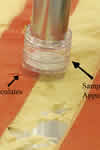
Conservation vacuuming removes particulate soils that have accumulated during the flag’s lifetime. During conservation vacuuming, a sample of the dirt on the flag is taken. If desired, this sample can be analyzed to learn the composition of the soils, which could give insight into a flag’s history (2005.103).
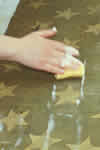
Combination soils – Many of the flags in storage now have a combination of small particulate and sooty soils. The wool flags in particular exhibit this type of soiling. We have found that a two-step process works best to clean these flags, after testing to be sure dye loss will not occur. First, the flag is cleaned with a solvent to loosen and begin to remove the sooty (oily) soils. Second, the flag is cleaned with a surfactant (detergent) in water to remove the loosened and water-soluble soils using a suction table.
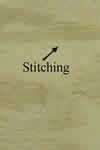
Stabiltex® encapsulation – this is a stitching treatment, using a sheer, polyester fabric, called Stabiltex®. We treated one flag in this manner for an exhibition, encapsulating the red and white sections of a French National pattern flag from the Civil War. In contrast to the earlier netting treatments in which the extensive stitching pierced the flags, the Stabiltex® was stitched to itself where the flag had losses, so no new holes were made and fewer stitches were used overall.
Adhesives - Although once supple, painted areas on the flags are now brittle and fragile. Many flags have lost vast areas of paint, while others have large splits within the painted areas. To prevent further loss of the flags and their historical information, conservation-quality adhesive treatments have been used to keep the fragile pieces of flags together. Small pieces of Stabiltex® coated with an adhesive have been nicknamed “bandaids” and are used to hold pieces together.
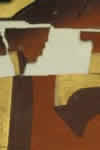 painted area before treatment (2001.0130)
painted area before treatment (2001.0130)
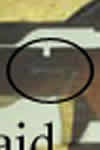 painted area after treatment (2001.0130)
painted area after treatment (2001.0130)
When the painted area is separated from the flag and/or extremely fragmented, the entire painted area will be lined with adhesive-coated Stabiltex®. To date, only three flags in the collection have required this treatment.
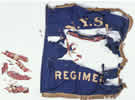 Flag before treatment, painted center off to left (2002.0155)
Flag before treatment, painted center off to left (2002.0155)
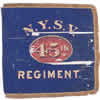 Flag after treatment, front view (2002.155)
Flag after treatment, front view (2002.155)
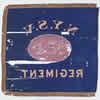 Flag after treatment, back view showing Stabiltex® in center (2002.155)
Flag after treatment, back view showing Stabiltex® in center (2002.155)